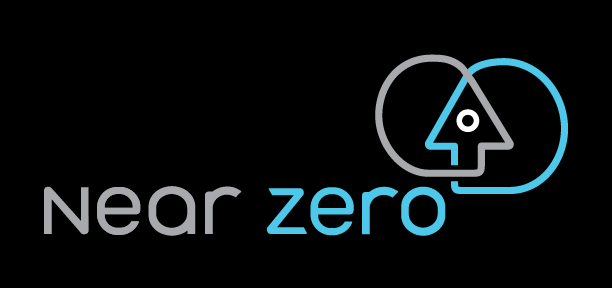Energy High in the Sky: Expert Perspectives on Airborne Wind Energy Systems
Winds near Earth’s surface are already used to generate substantial amounts of electricity. However, higher in the sky—much higher than today’s wind turbines can reach—winds tend to be stronger and steadier, making these winds an even larger source of energy. Various companies have formed that aim to capture energy in these high-altitude winds using aircraft tethered to the ground. To scale up, these aircraft must be able to produce electricity cheaply enough and reliably enough to compete in electricity markets.
About two dozen research groups—at companies, universities, and government labs including NASA—have been studying ways of capturing energy from these high-altitude winds. These approaches are generally known as “airborne wind energy,” and while diverse, they all involve a flying component that harnesses the wind energy—in some cases kites, airfoils, blimp-like balloons, and wings or planes. In each case, the aircraft is held in place by a tether that ties them to a particular locale, while also transmitting energy from high-altitudes down to the ground. The amount of energy that can potentially be extracted from high-altitude winds is enormous, but the field of airborne wind energy is still in its infancy, according to an independent report by renewable energy consultants GL Garrad Hassan.
Near Zero conducted both an informal discussion and a formal survey to find out what technologies are most advanced, which have the best potential, and how best government could jumpstart the development of the airborne wind energy industry. Thirty-one experts completed the formal survey, identifying technological, engineering, and regulatory barriers to testing airborne wind energy technologies and bringing the industry to large scale.
Airborne wind energy could grow quickly—as long as it gets a jumpstart.
The results suggest that the airborne wind energy could grow quickly, as long as it gets a jumpstart with government funding for R&D. During this initial stage of the industry’s development, funding of $10 million per year could cut many years off how long it takes for the industry to reach a significant scale, and funding of $100 million per year would further accelerate the deployment of high-altitude wind generators, the experts said.
Although there are many technological and engineering barriers, most of the experts agreed that one of the biggest barriers is the body of existing regulations, which pose a challenge both for testing prototypes today and for large-scale implementation in coming years. These regulations include limits on what kinds of aircraft can fly and where, and also requirements for permits and safety systems. Thus regulations pose a challenge for rapid testing of various prototypes, a process experts said is necessary for working out which technologies are most promising, and to allow them to cross the “valley of death” from prototype stage to commercial stage.
The experts argued in favor of spending a larger share of research funds on systems that show greater promise of being able to scale up to large systems. They favored particular types of systems—those using rigid wings—and argued against funding those using balloons. Some experts also suggested installing airborne wind energy systems offshore, in part because of the large wind resource available, and because regulatory and safety issues may be easier to resolve than for land-based systems.
a Near Zero white paper
Mason Inman * and Steven J Davis *†
* Near Zero
† Carnegie Institution for Science, Department of Global Ecology
Expert participants
39 experts participated in the discussion and elicitation for this report:
Adam Rein
Altaeros Energies
Alexander Bormann
Aeroix
Allister Furey
University of Sussex
Andreas Reuter
Institute of Wind Energy Systems
Becker van Niekerk
Parsec Aero
Ben Glass
Altaeros Energies
Bruce Weddendorf
Velocity Cubed
Carlo Perassi
Wind Operations Worldwide S.p.A
Chris Purvis
no affiliation stated
Corey Houle
Crosswind Power Systems
Corwin Hardham
Makani Power
Cristina Archer
California State University, Chico
Damon Vander Lind
Makani Power
Dimitri Chernyshov
Highest Wind
Douglas Amick
Amick Global
Eric Blumer
Honeywell Aerospace
Grant Calverley
SkyMill Energy
Guido Luetsch
NTS Energie- und Transportsysteme GmbH
Ian Alers
SAAB Avitronics
JoeBen Bevirt
Joby Energy
Ken Caldeira
Carnegie Institution for Science
Kurt Geebelen
KU Leuven
Lorenzo Fagiano
Politecnico di Torino
Mark Moore
NASA Langley Research Center
Martin Hoffert
New York University
Matt Bennett
WindLift
Michael Strobel
Fraunhofer Institute for Wind Energy and Energy System Technology
Moritz Diehl
K.U. Leuven
P.J. Shepard
Sky WIndpower
Pete Lynn
Peter Lynn Kites
Peter Lissaman
Da Vinci Ventures
Rob Creighton
WindLift
Robert Lumley
KiteFarms
Robert Wilson
Oregon State University
Sara Smoot
Stanford University
Saul Griffith
Otherlab
Sébastien Gros
ERC Highwind
Stephan Brabeck
SkySails
Udo Zillmann
Daidalos Capital
photo credit: Jason Blackeye
